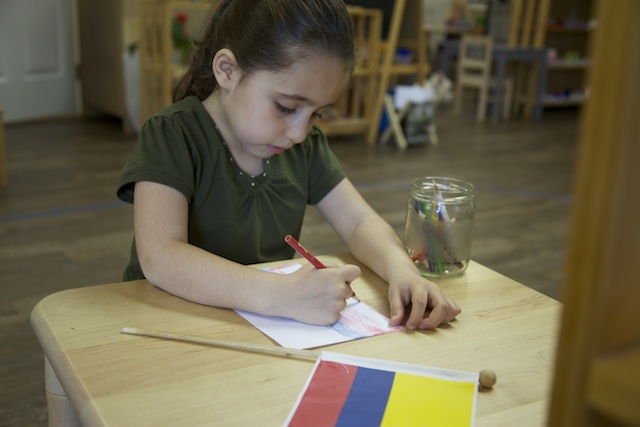Centering
Other Good Things

We’re very pleased to welcome Charlotte Wood to our growing Montessori family. Charlotte, who will bring many unique talents to Baan Dek, will officially start with us in August. In the meantime, she’s decided to write a few blog posts. How can we not love that energy?
Upon her initial visit to Sioux Falls, South Dakota, we struck up a conversation with Charlotte about the famous Montessori term, “normalization”, and how the term impacts the community and how a greater appreciation needs to be developed. Well, here we go. Hope you enjoy! More soon…
“Normalization. Arguably the keystone of Montessori work (and Montessori’s work), this loaded, non-PC word is at best uncomfortable for many Montessorians and non-Montessorians alike, and at worst the ultimate deterrent from this exquisite pedagogy. The thought process behind this delightful phenomenon Maria Montessori accidentally stumbled upon is solid, as well as the nomenclature — “normal” originally references the Carpenter’s Square, being aligned with a true right angle1. This is a fairly palatable definition of this term, and makes applying it to children less unsavory than the cultural connotations of “normal.” “Normalization” sounds like we are trying to cut away all that makes our children beautiful and unique and special, and turn them into little compliant cookie cutters. Also, what family wants to enroll their child in a program where their child might be considered abnormal? That sounds awful.
So, what do we really mean by this whole “normalization” business? It is still a truly foundational concept to our work, so why not try and find a more accurate and friendly term to represent this beautiful transformation we witness in the child?
Maria Montessori describes this “new child” in The Absorbent Mind, and develops the importance of this work as preliminary to the academic work in the Casa:
“Only ‘normalized children’, aided by their environment, show in their subsequent development those wonderful powers that we describe, spontaneous discipline, continuous and happy work, social sentiments of help and sympathy for others… activity freely chosen becomes their regular way of living.” (p. 188)
Montessori uses a diagram to show that all children, regardless of the type, color, brand, or style of “baggage” that they bring in with them, shed these behaviors like a chrysalis and emerge a calm, happy, contented, focused butterfly, devouring their world and all experiences in it with hungry and respectful senses. How appropriate that the diagram Montessori created to show this change she witnessed in children through mindful work (an activity using real objects done by the hand accompanied by mental concentration2) was a fan with “normalization” right in the middle, in the center. This is what I believe the concept to be in our vernacular — a centering. As in yoga, prayer, and other meditation practices, the child lets her baggage fall away and returns to her path of development. She is being true to the force within her calling her to go and do. I vote this is a more accurate term for what I have witnessed in my Casa, and in others I have observed. I can aid a child on the path to centering, I cannot accompany them on their journey to “normal”.”
By Charlotte Wood
Footnotes:
1 “Normal.” Online Etymology Dictionary. Douglas Harper, Historian. 03 Jun. 2011. Dictionary.com.
2 Lecture, “Normalization,” Ginni Sackett, MINW Primary Course 2009-2010
Written by:
Baan Dek
